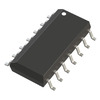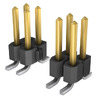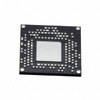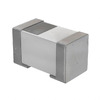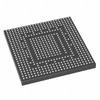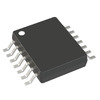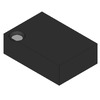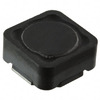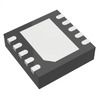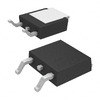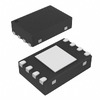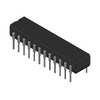2SB772 Transistor: Features, Pinout, and Datasheet
This article explores the 2SB772 transistor, a versatile and reliable component in various electronic applications. Housed in a TO-126 package, it is widely utilized for its ability to handle power management and signal functions efficiently. The 2SB772 is a favored choice in consumer electronics for its durability and in industrial settings for its precision. This article will cover its pinout, CAD model, and detailed insights into its applications, performance, and practical usage.Catalog

What is the 2SB772 Transistor?
The 2SB772 is a PNP transistor celebrated for its dependability, crafted using advanced planar technology. It forms a complementary pair with its NPN counterpart, the 2SD882, thereby broadening design possibilities in electronics. This component excels in switching operations and audio amplification, offering diverse functionality. With the ability to handle currents up to 3A, the 2SB772 proves its worth in situations requiring effective load management. Its collector-emitter saturation voltage is remarkably low at 0.3V, making it an ideal choice for low-voltage switching applications. This feature shines in battery-powered devices, where minimizing energy use enhances device performance.
The 2SB772 has found its place in amplifiers, power supplies, and motor controls. It has been noted for delivering optimal performance in audio systems, offering clean sound amplification with minimal distortion. The low saturation voltage further empowers to construct efficient circuits, thereby reducing heat and boosting reliability. When incorporating the 2SB772, attention should be paid to thermal management and circuit protection, as high currents can lead to temperature increases. In practical applications, incorporating heat sinks or ensuring adequate ventilation can help maintain ideal operating conditions. Suitable biasing techniques can enhance both performance and longevity. Choosing compatible supporting components is also needed to maximizing this transistor’s potential.
2SB772 Pin Configuration
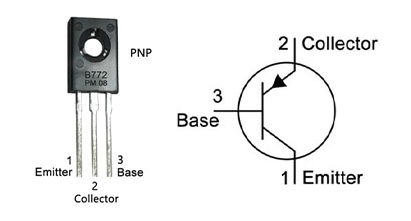
2SB772 Symbol, Footprint, and CAD Model
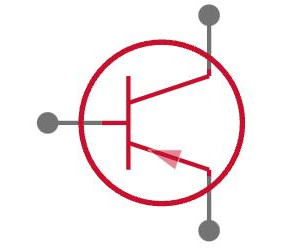
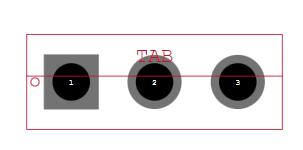

2SB772 Technical Specifications
|
Type |
Parameter |
|
Contact Plating |
Tin |
|
Mounting Type |
Through Hole |
|
Number of Pins |
3 |
|
Collector-Emitter Breakdown Voltage |
30V |
|
hFE Min |
100 |
|
Packaging |
Tube |
|
Pbfree Code |
Yes |
|
Moisture Sensitivity Level (MSL) |
1 (Unlimited) |
|
ECCN Code |
EAR99 |
|
Max Power Dissipation |
12.5W |
|
Current Rating |
-3A |
|
Base Part Number |
2SB7 |
|
Element Configuration |
Single |
|
Transistor Application |
SWITCHING |
|
Polarity/Channel Type |
PNP |
|
Mount |
Through Hole |
|
Package / Case |
TO-225AA, TO-126-3 |
|
Transistor Element Material |
SILICON |
|
Number of Elements |
1 |
|
Operating Temperature |
150°C TJ |
|
JESD-609 Code |
e3 |
|
Part Status |
Obsolete |
|
Number of Terminations |
3 |
|
Voltage - Rated DC |
-30V |
|
Peak Reflow Temperature (Cel) |
250 |
|
Frequency |
100MHz |
|
Pin Count |
3 |
|
Power Dissipation |
12.5W |
|
Gain Bandwidth Product |
100MHz |
|
Transistor Type |
PNP |
|
Collector Emitter Voltage (VCEO) |
30V |
|
DC Current Gain (hFE) (Min) @ Ic, Vce |
100 @ 100mA 2V |
|
Vce Saturation (Max) @ Ib, Ic |
1.1V @ 150mA, 3A |
|
Collector Base Voltage (VCBO) |
60V |
|
Height |
11.05mm |
|
Width |
2.8mm |
|
RoHS Status |
ROHS3 Compliant |
|
Max Collector Current |
3A |
|
Current - Collector Cutoff (Max) |
100µA |
|
Transition Frequency |
100MHz |
|
Emitter Base Voltage (VEBO) |
5V |
|
Length |
7.8mm |
|
Radiation Hardening |
No |
|
Lead Free |
Lead Free |
Features of the 2SB772
• Minimizes power loss and improves system efficiency.
• Reduces heat generation, enhancing thermal management and reliability.
• Ideal for compact designs where space is limited.
• Simplifies circuit design by enabling complementary PNP-NPN pairing.
• Ensures harmonious and enhanced circuit performance.
• Commonly used in scenarios demanding reliability and efficiency, such as audio systems.
• Preserves signal integrity and minimizes distortion in different applications.
• Excellent current handling capability.
• Adaptable and reliable for diverse electronic setups.
Applications of 2SB772
Relay Driving and Switching Tasks
In the context of relay driving, the 2SB772 showcases its strengths by managing considerable current loads while ensuring dependable switching capabilities. The swift response times it offers prompt activation of relays. This characteristic is reminiscent accrued in industrial automation, where being quick to respond to switching demands can enhance both productivity and safety within the workspace. The utility of the 2SB772 extends beyond mere on/off operations in general switching tasks. For example, within control systems where accurate timing and sequencing hold great importance.
Audio Power Amplification
The utilization of the 2SB772 lies in audio power amplification. This application necessitates not just the ability to boost signals but also to uphold sound fidelity and minimize distortion. The inherent properties of the 2SB772 align well with these demanding requirements, garnering positive feedback. In venues where sound quality is of utmost importance like concert halls and recording studios, the meticulous selection of amplification components has yielded substantial improvements.
DC-DC Conversion Systems
In the discussion of DC-DC conversion systems, the integral role played by the 2SB772 is important. Its efficiency in switching applications allows for effective energy conversion, making it a favored option in various power supply designs.
Equivalent to the 2SB772
• 2N6407
• 2SA715
• 2SA738
• 2N6414
• 2N6415
• 2SA963
• 2SB743
• 2SB744
• MJE172
• KSB772
How to Use 2SB772?
The 2SB772 transistor is known for its impressive capacity to manage currents of up to 3A, making it an adaptable component for a wide range of electronic applications.
Driving High-Capacity DC Motors
When employing the 2SB772 for driving high-capacity DC motors, it is important to evaluate the motor's specifications alongside the transistor's capabilities. Effective heat dissipation is needed; thus, the application of proper heat sinks can protect against thermal overload. Implementing a pulse width modulation (PWM) control strategy can refine the speed and torque output of DC motors, enabling smoother operation under varying load circumstances. This approach not only bolsters performance but also contributes to extending the motor's lifespan by minimizing energy waste.
Utilizing the 2SB772 with LEDs and Relays
Beyond motor control, the 2SB772 proves beneficial in managing LED arrays and relays. In LED applications, the transistor can capably support multiple LEDs, fostering brilliant illumination in designs such as backlighting or decorative lighting without risking overload. Integrating current limiting resistors alongside the 2SB772 can help ensure that the LEDs function within safe current parameters, ultimately prolonging their usability.
Relays also serve as an excellent avenue for the 2SB772's application. They work by controlling higher voltages and currents with low-power signals. When incorporating relays, protecting the circuit is required; employing methods such as flyback diodes helps mitigate voltage spikes that could potentially harm the transistor. This protective measure contributes to the reliability and effectiveness of the overall design, ensuring that components function harmoniously.
Building High-Power Audio Amplifiers
The 2SB772 shines in the design of high-power audio amplifiers. Utilizing the transistor to drive speakers directly from low-powered audio outputs, like those from radios or media players. Thoughtful circuit design matters greatly; therefore, feedback mechanisms should be incorporated to preserve sound quality and minimize distortion even at elevated volumes. Judicious selection of complementary parts, including capacitors and inductors, can yield enhancements in amplifier performance.
The versatility of the 2SB772 in applications ranging from driving DC motors to constructing audio amplifiers illustrates its role in contemporary electronics. By adhering to best practices in circuit design such as thermal management and protective strategies, one can fully realize the potential of the 2SB772, resulting in efficient and impactful electronic solutions.
2SB772 Transistor Package
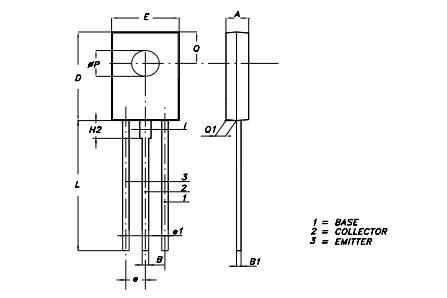
2SB772 Manufacturer Information
STMicroelectronics stands out as a player in the semiconductor technology, taking responsibility for the manufacture of the 2SB772 component. This product not only embodies the firm's vast expertise but also highlights their intricate web of collaborations, elements that mark their groundbreaking contributions to System-on-Chip (SoC) innovations. The dynamic landscape of SoC technology opens up extensive opportunities for refining modern microelectronics, thereby paving the way for advanced and efficient device capabilities. STMicroelectronics embodies a profound commitment to excellence and visionary thinking within the spectrum of semiconductor technology. Their contributions to the SoC landscape reflect a synergy of innovation and collaboration, equipping them to navigate the growing complexities of contemporary electronics and ensuring their lasting influence in the industry.
Datasheet PDF
2SB772 Datasheets:
About us
ALLELCO LIMITED
Read more
Quick inquiry
Please send an inquiry, we will respond immediately.
Frequently Asked Questions [FAQ]
1. How can the 2SB772 be safely operated to ensure optimal performance?
To extend the lifespan and dependability of the 2SB772, it is advisable to run this component at a minimum of 20% below its maximum ratings. In practical terms, this means that with a maximum collector current of 3A, the load should ideally be kept around 2.4A. Additionally, the collector-emitter voltage must remain under 24V to maintain safe operational conditions. Implementing a heatsink proves beneficial for temperature regulation, maintaining a range from -55 to +150 degrees Celsius.
2. What is the complementary NPN transistor for the 2SB772?
The 2SD882 is identified as the complementary NPN transistor for the 2SB772. Employing these two transistors together plays a role in the design of push-pull amplifiers or complementary symmetry circuits. This technique is commonly embraced by experienced designers to boost efficiency and output linearity, drawing on the foundational principles that underpin both modern and traditional electronic systems.
3. What should one know about the 2SB772 transistor?
The 2SB772 is a PNP transistor, noted for its adoption of planar technology and its design catering to high-performance applications. It finds application across various domains, especially in switching and audio amplification, with its capacity to handle loads of up to 3A and a low saturation voltage, making it suited for low-voltage scenarios. This combination not only fulfills strict technical criteria but also resonates deeply with the intricate requirements of a wide array of applications, reflecting the ever-evolving demands of the electronic industry.
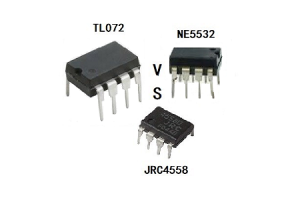
TL072 vs JRC4558 vs NE5532: Key Differences Explained
on November 20th

Key Features of LTC6404IUD-1#PBF for Reliable Performance
on November 20th
Popular Posts
-

What is GND in the circuit?
on January 1th 3291
-

RJ-45 Connector Guide: RJ-45 Connector Color Codes, Wiring Schemes, R-J45 Applications, RJ-45 Datasheets
on January 1th 2826
-

Understanding Power Supply Voltages in Electronics VCC, VDD, VEE, VSS, and GND
on November 20th 2687
-

Fiber Connector Types: SC Vs LC And LC Vs MTP
on January 1th 2271
-

Comparison Between DB9 and RS232
on January 1th 1891
-

What Is An LR44 Battery?
Electricity, that ubiquitous force, quietly permeates every aspect of our daily lives, from trivial gadgets to life-threatening medical equipment, it plays a silent role. However, truly grasping this energy, especially how to store and efficiently output it, is no easy task. It is against this background that this article will focus on a type of coin cell battery that may seem insignificant on the...on January 1th 1849
-

What Is RF and Why Do We Use It?
Radio Frequency (RF) technology is a key part of modern wireless communication, enabling data transmission over long distances without physical connections. This article delves into the basics of RF, explaining how electromagnetic radiation (EMR) makes RF communication possible. We will explore the principles of EMR, the creation and control of RF signals, and their wide-ranging uses. The article ...on January 1th 1818
-

Understanding the Fundamentals:Inductance Resistance, andCapacitance
In the intricate dance of electrical engineering, a trio of fundamental elements takes center stage: inductance, resistance, and capacitance. Each bears unique traits that dictate the dynamic rhythms of electronic circuits. Here, we embark on a journey to decipher the complexities of these components, to uncover their distinct roles and practical uses within the vast electrical orchestra. Inductan...on January 1th 1817
-

CR2430 Battery Comprehensive Guide: Specifications, Applications and Comparison to CR2032 Batteries
What is CR2430 battery ?Benefits of CR2430 BatteriesNormCR2430 Battery ApplicationsCR2430 EquivalentCR2430 VS CR2032Battery CR2430 SizeWhat to look for when buying the CR2430 and equivalentsData Sheet PDFFrequently Asked Questions Batteries are the heart of small electronic devices. Among the many types available, coin cells play a crucial role, commonly found in calculators, remote controls, and ...on January 1th 1806
-

Comprehensive guide to hFE in transistors
Transistors are crucial components in modern electronic devices, enabling signal amplification and control. This article delves into the knowledge surrounding hFE, including how to select a transistor's hFE value, how to find hFE, and the gain of different types of transistors. Through our exploration of hFE, we gain a deeper understanding of how transistors work and their role in electronic circu...on November 20th 1796




